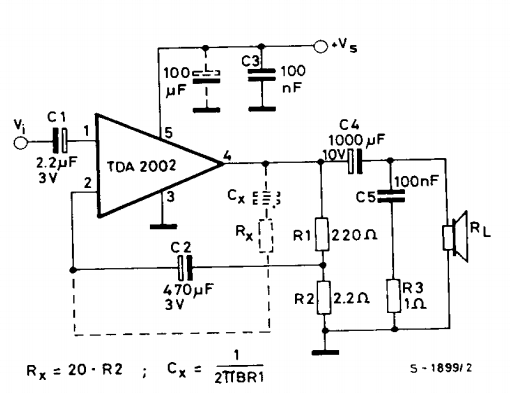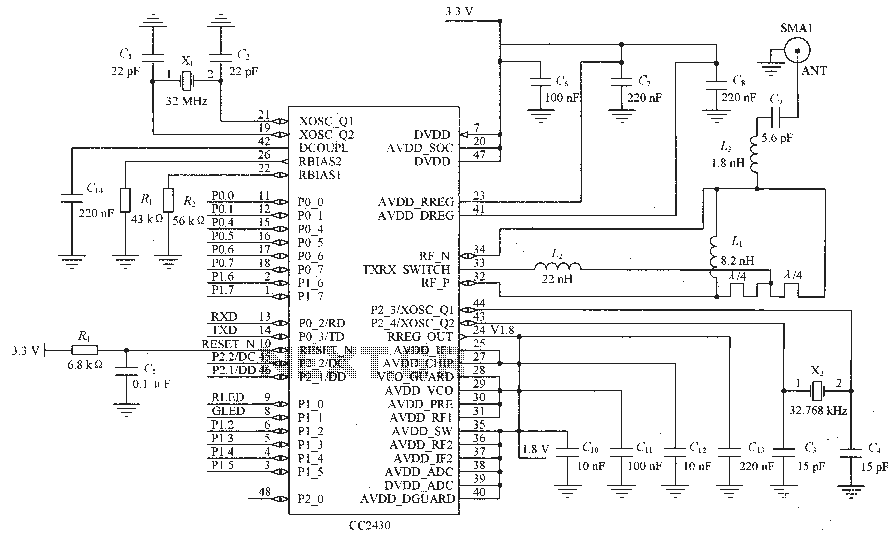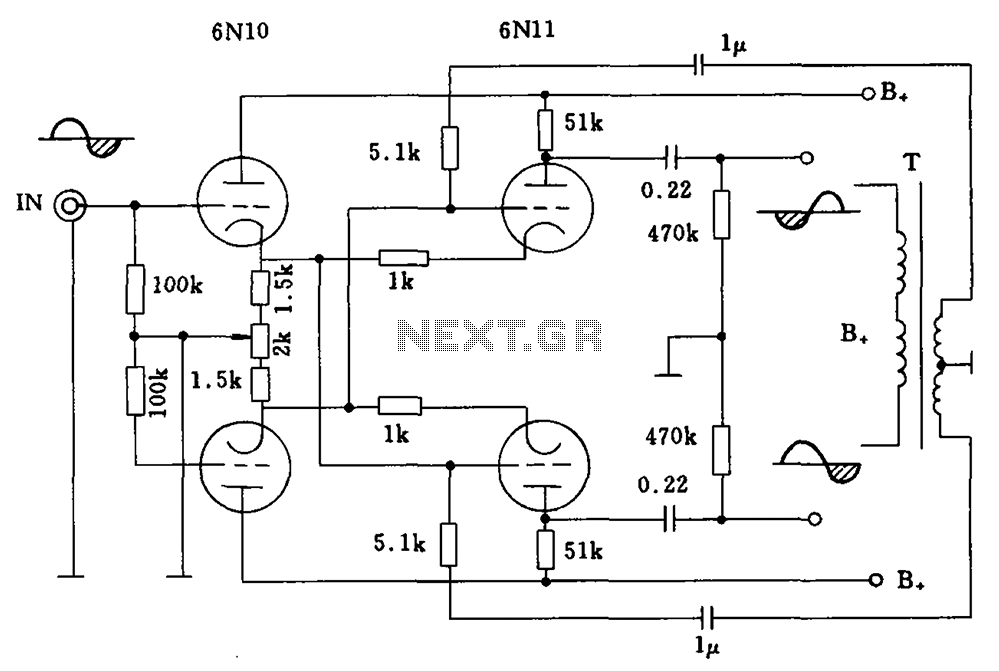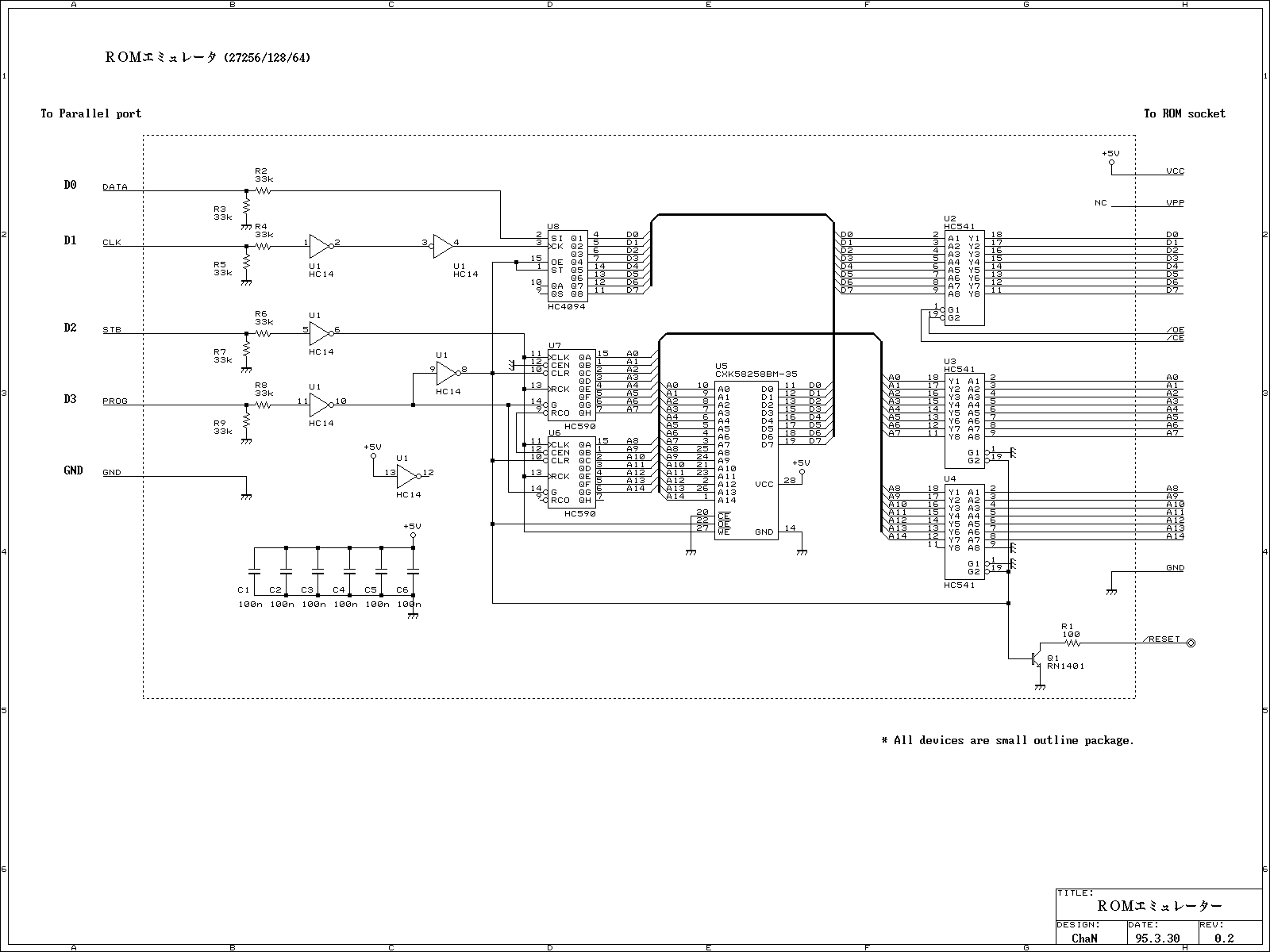
5 zone alarm circuit
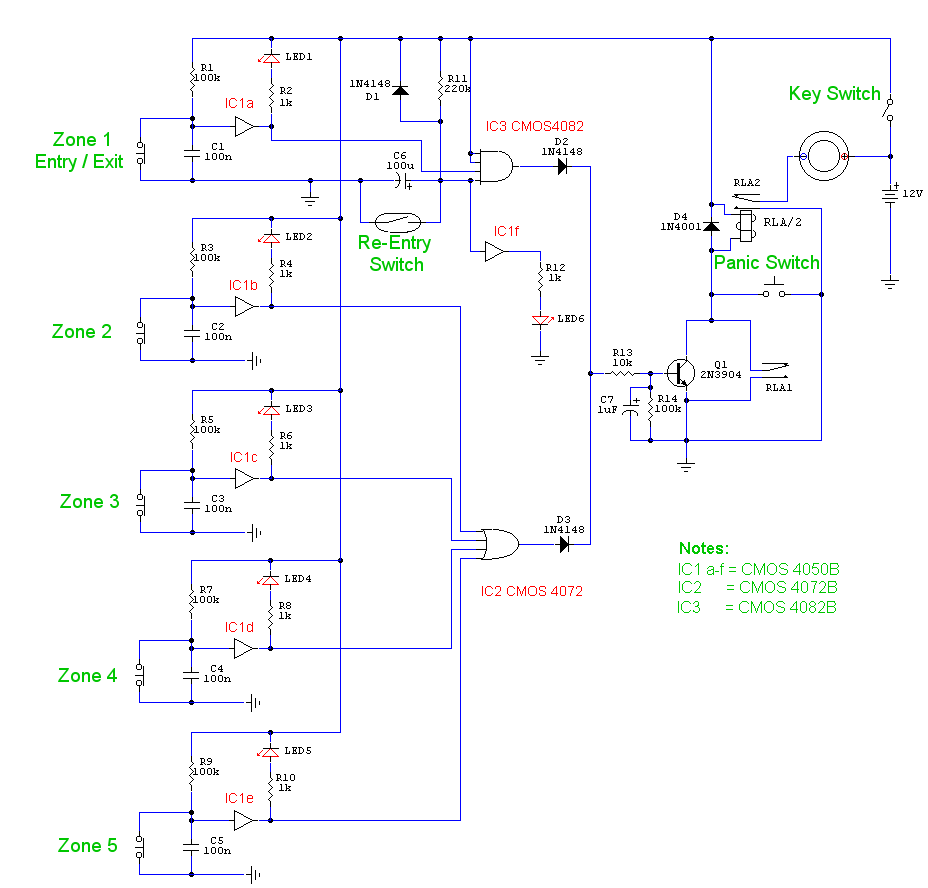
This is a complete alarm system with five independent zones suitable for a small office or home environment. It utilizes three CM integrated circuits and features a timed entry/exit zone, four immediate zones, and a panic button. There are indicators for each zone as well as a system armed indicator. Each zone employs a normally closed contact, which can be micro switches or standard alarm contacts, typically reed switches. Appropriate switches can be purchased from alarm shops and concealed in door frames or window ledges. Zone 1 serves as the timed zone and must be designated as the entry and exit point of the building. Zones 2 to 5 are immediate zones that will trigger the alarm without delay. The input capacitors, C1-C5, provide some RF immunity for long wiring runs, while C7 and R14 function as a transient suppressor. The key switch acts as the Set/Unset and Reset switch, and for enhanced security, it should be a metal type with a key. Upon activation, C6 charges through R11, which serves as the exit delay set to approximately 30 seconds. This timing can be adjusted by varying either C6 or R11. Once the timing period has elapsed, LED6 illuminates, indicating that the system is armed. LED6 may be mounted externally, such as at the bell box, to provide a visual indication that the system is set. Once armed, any contact that opens will trigger the alarm, including Zone 1. To avoid triggering the alarm upon entry into the building, the concealed re-entry switch must be engaged. This switch discharges C6 and initiates the entry timer. The re-entry switch could be a concealed reed switch discreetly placed within a door frame. The panic switch, when activated, will trigger the alarm if the system is set. Relay contacts RLA1 provide the latching function, while RLA2 operates the siren or buzzer.
This alarm system is designed for reliability and ease of use in residential or small commercial applications. The integration of three CM ICs simplifies the circuit design while maintaining functionality across multiple zones. The use of normally closed contacts enhances security by ensuring that any disruption to the circuit will activate the alarm. The timed entry/exit feature allows users to enter or exit the premises without triggering the alarm, which is crucial for practical operation.
The circuit's design includes various components to enhance its performance. The input capacitors, C1-C5, not only provide RF immunity but also help to filter out potential noise that could interfere with the alarm's operation. The transient suppressor formed by C7 and R14 protects the circuit from voltage spikes that could occur during power fluctuations, ensuring longevity and reliability of the system.
The key switch serves as a critical control point for the system, allowing users to set or unset the alarm as needed. The choice of a metal key switch is advisable for added security, preventing unauthorized access to the system's controls. The exit delay, governed by the charging of C6 through R11, provides a user-friendly feature that allows for a brief window to exit the premises after setting the alarm.
The LED indicators serve as a visual confirmation of the system's status, enhancing user experience and ensuring that users are aware of the system's armed state. The concealed re-entry switch is a clever addition, allowing users to enter the building without triggering the alarm, which is especially useful in scenarios where quick access is needed.
Overall, this alarm system is a robust solution for securing small spaces, providing essential features that address both functionality and user convenience. The combination of independent zones, visual indicators, and thoughtful design elements results in a comprehensive security system that can be easily installed and operated in various environments.This is a complete alarm system with 5 independent zones suitable for a small office or home environment. It uses just 3 CM IC`s and features a timed entry / exit zone, 4 immediate zones and a panic button. There are indicators for each zone a system armed indicator. The schematic is as follows: Each zone uses a normally closed contact. These c an be micro switches or standard alarm contacts (usually reed switches). Suitable switches can be bought from alarm shops and concealed in door frames, or window ledges. Zone 1 is a timed zone which must be used as the entry and exit point of the building. Zones 2 5 are immediate zones, which will trigger the alarm with no delay. Some RF immunity is provided for long wiring runs by the input capacitors, C1-C5. C7 and R14 also form a transient suppresser. The key switch acts as the Set/Unset and Reset switch. For good security this should be the metal type with a key. At switch on, C6 will charge via R11, this acts as the exit delay and is set to around 30 seconds. This can be altered by varying either C6 or R11. Once the timing period has elapsed, LED6 will light, meaning the system is armed. LED6 may be mounted externally (at the bell box for example) and provides visual indication that the system has set. Once set any contact that opens will trigger the alarm, including Zone 1. To prevent triggering the alarm on entry to the building, the concealed re-entry switch must be operated.
This will discharge C6 and start the entry timer. The re-entry switch could be a concealed reed switch, located anywhere in a door frame, but invisible to the eye. The panic switch, when pressed, will trigger the alarm when set. Relay contacts RLA1 provide the latch, RLA2 operate the siren or buzzer. 🔗 External reference
This alarm system is designed for reliability and ease of use in residential or small commercial applications. The integration of three CM ICs simplifies the circuit design while maintaining functionality across multiple zones. The use of normally closed contacts enhances security by ensuring that any disruption to the circuit will activate the alarm. The timed entry/exit feature allows users to enter or exit the premises without triggering the alarm, which is crucial for practical operation.
The circuit's design includes various components to enhance its performance. The input capacitors, C1-C5, not only provide RF immunity but also help to filter out potential noise that could interfere with the alarm's operation. The transient suppressor formed by C7 and R14 protects the circuit from voltage spikes that could occur during power fluctuations, ensuring longevity and reliability of the system.
The key switch serves as a critical control point for the system, allowing users to set or unset the alarm as needed. The choice of a metal key switch is advisable for added security, preventing unauthorized access to the system's controls. The exit delay, governed by the charging of C6 through R11, provides a user-friendly feature that allows for a brief window to exit the premises after setting the alarm.
The LED indicators serve as a visual confirmation of the system's status, enhancing user experience and ensuring that users are aware of the system's armed state. The concealed re-entry switch is a clever addition, allowing users to enter the building without triggering the alarm, which is especially useful in scenarios where quick access is needed.
Overall, this alarm system is a robust solution for securing small spaces, providing essential features that address both functionality and user convenience. The combination of independent zones, visual indicators, and thoughtful design elements results in a comprehensive security system that can be easily installed and operated in various environments.This is a complete alarm system with 5 independent zones suitable for a small office or home environment. It uses just 3 CM IC`s and features a timed entry / exit zone, 4 immediate zones and a panic button. There are indicators for each zone a system armed indicator. The schematic is as follows: Each zone uses a normally closed contact. These c an be micro switches or standard alarm contacts (usually reed switches). Suitable switches can be bought from alarm shops and concealed in door frames, or window ledges. Zone 1 is a timed zone which must be used as the entry and exit point of the building. Zones 2 5 are immediate zones, which will trigger the alarm with no delay. Some RF immunity is provided for long wiring runs by the input capacitors, C1-C5. C7 and R14 also form a transient suppresser. The key switch acts as the Set/Unset and Reset switch. For good security this should be the metal type with a key. At switch on, C6 will charge via R11, this acts as the exit delay and is set to around 30 seconds. This can be altered by varying either C6 or R11. Once the timing period has elapsed, LED6 will light, meaning the system is armed. LED6 may be mounted externally (at the bell box for example) and provides visual indication that the system has set. Once set any contact that opens will trigger the alarm, including Zone 1. To prevent triggering the alarm on entry to the building, the concealed re-entry switch must be operated.
This will discharge C6 and start the entry timer. The re-entry switch could be a concealed reed switch, located anywhere in a door frame, but invisible to the eye. The panic switch, when pressed, will trigger the alarm when set. Relay contacts RLA1 provide the latch, RLA2 operate the siren or buzzer. 🔗 External reference
Warning: include(partials/cookie-banner.php): Failed to open stream: Permission denied in /var/www/html/nextgr/view-circuit.php on line 713
Warning: include(): Failed opening 'partials/cookie-banner.php' for inclusion (include_path='.:/usr/share/php') in /var/www/html/nextgr/view-circuit.php on line 713

